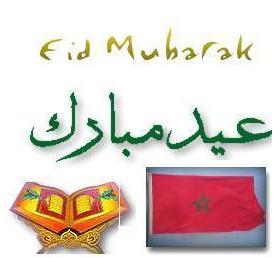Islamic culture started to evolve under the Umayyads, but it grew to maturity in the first century of the Abbasid
dynasty. The Abbasids came to power in AD 750 when armies originating from Khorasan, in eastern Iran, finally defeated
the Umayyad armies. The Islamic capital shifted to Iraq under the Abbasids. After trying several other cities,
the Abbasid rulers chose a site on the Tigris River on which the City of Peace, Baghdad, was built in 762. Baghdad
remained the political and cultural capital of the Islamic world from that time until the Mongol invasion in 1258,
and for a good part of this time it was the center of one of the great flowerings of human knowledge. The Abbasids
were Arabs descended from the Prophet's uncle, but the movement they led involved Arabs and non-Arabs, including
many Persians, who had converted to Islam and who demanded the equality to which they were entitled in Islam.
The Abbasids distributed power more evenly among the different ethnicities and regions than the Umayyads had,
and they demonstrated the universal inclusiveness of Islamic civilization. They achieved this by incorporating the
fruits of other civilizations into Islamic political and intellectual culture and by marking these external
influences with a distinctly Islamic imprint.
As time passed, the central control of the Abbasids was reduced and independent local leaders and groups took
over in the remote provinces. Eventually the rival Shia Fatimid caliphate was established in Egypt, and the Baghdad
caliphate came under the control of expanding provincial dynasties. The office of the caliph was nonetheless
maintained as a symbol of the unity of Islam, and several later Abbasid caliphs tried to revive the power of the
office.
In 1258, however, a grandson of Mongol ruler Genghis Khan named Hulagu, encouraged by the kings of Europe, led his armies across the
Zagros Mountains of Iran and destroyed Baghdad. According to some estimates, about 1 million Muslims were murdered in this massacre.
In 1259 and 1260 Hulagu's forces marched into Syria, but they were finally defeated by the Mamluks of Egypt, who had taken over the Nile
Valley. For the next two centuries, centers of Islamic power shifted to Egypt and Syria and to a number of local dynasties. Iraq became
an impoverished, depopulated province where the people took up a transitory nomadic lifestyle. Iraq did not finally experience a major
cultural and political revival until the 20th century
X. THE PRESENCE OF ISLAM IN THE 20TH CENTURYMany of the accepted Islamic religious and
cultural traditions were established between the 7th and 10th centuries, during the classical period of Islamic history. However,
Islamic culture continued to develop as Islam spread into new regions and mixed with diverse cultures. The 19th-century occupation
of most Muslim lands by European colonial powers was a main turning point in Muslim history. The traditional Islamic systems of
governance, social organization, and education were undermined by the colonial regimes. Nation-states with independent governments
divided the Muslim community along new ethnic and political lines.
Today about 1 billion Muslims are spread over 40 predominantly Muslim countries and 5 continents, and their numbers are growing
at a rate unmatched by that of any other religion in the world. Despite the political and ethnic diversity of Muslim countries,
a core set of beliefs continues to provide the basis for a shared identity and affinity among Muslims. Yet the radically different
political, economic, and cultural conditions under which contemporary Muslims live make it difficult to identify what constitutes
standard Islamic practice in the modern world. Many contemporary Muslims draw on the historical legacy of Islam as they confront
the challenges of modern life. Islam is a significant, growing, and dynamic presence in the world. Its modern expressions are as
diverse as the world in which Muslims live.
|
|
|
PREVIOUS
1
2
3
4
5
6
7
8
9
Back Home
|
|
|
